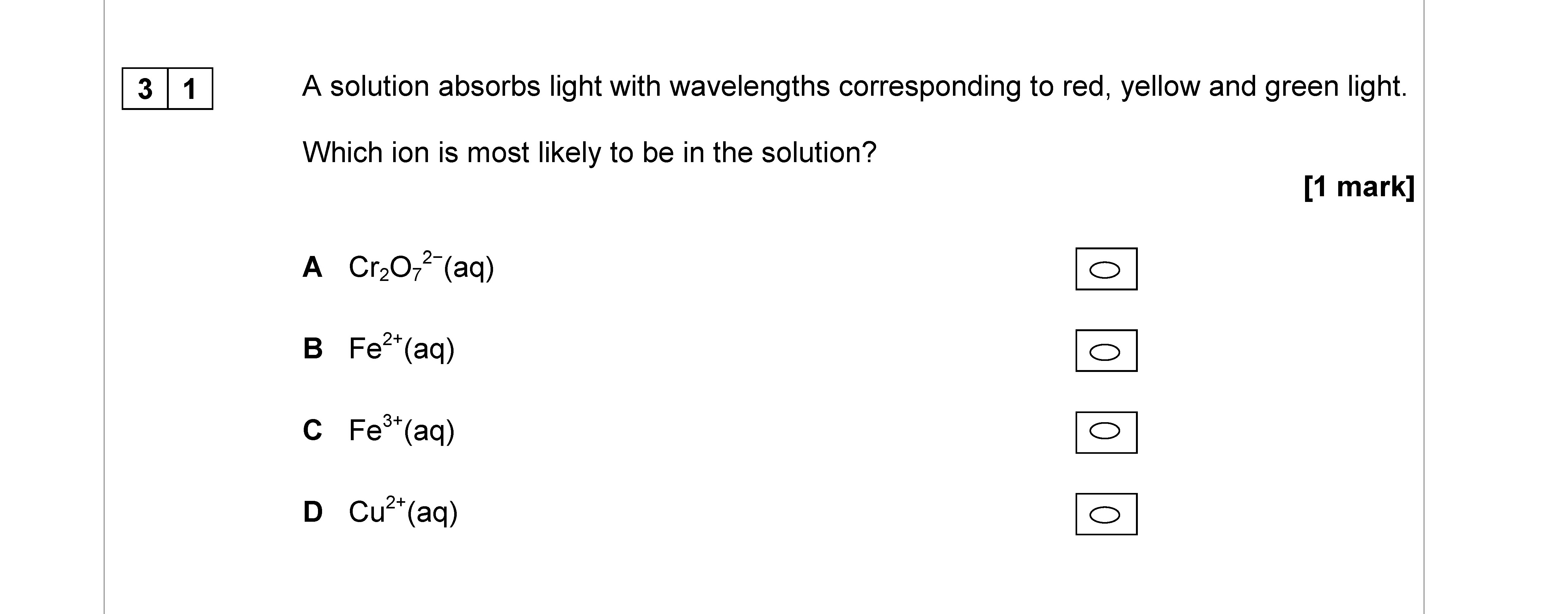Photo AI
A solution absorbs light with wavelengths corresponding to red, yellow and green light - AQA - A-Level Chemistry - Question 31 - 2017 - Paper 3
Question 31

A solution absorbs light with wavelengths corresponding to red, yellow and green light. Which ion is most likely to be in the solution?
Worked Solution & Example Answer:A solution absorbs light with wavelengths corresponding to red, yellow and green light - AQA - A-Level Chemistry - Question 31 - 2017 - Paper 3
Step 1
Which ion is most likely to be in the solution?
Answer
To determine which ion is likely present in the solution, we need to consider color absorption and transmission.
The solution absorbs red, yellow, and green light, meaning it transmits other wavelengths, particularly blue or violet light. Each ion absorbs different wavelengths based on their electronic structures.
Among the given options:
- A: Cr₂O₇²⁻ (orange, absorbs blue light)
- B: Fe²⁺ (light green, weak absorption, mostly blue)
- C: Fe³⁺ (yellow/brown, absorbs blue light)
- D: Cu²⁺ (blue, absorbs red)
The ion that would most likely absorb the light not absorbed by the solution (red, yellow, and green) would be the one that appears blue in color. Given this context, Cu²⁺ is the most plausible ion as it absorbs light in the red region and is responsible for a blue color in solution. Therefore, the most likely ion to be present is:
D. Cu²⁺(aq)
